Using SAP Business One you can add analytics to the business partner master form (and other forms/windows) giving the user instant access to the relevant customer, supplier, lead and other related information. These analytics can be graphical or grid-based. The image below shows a graphical view of the gross sales for a customer by year – with the last 10 years on display.
SAP Business One HANA – Analytics – gross sales by year: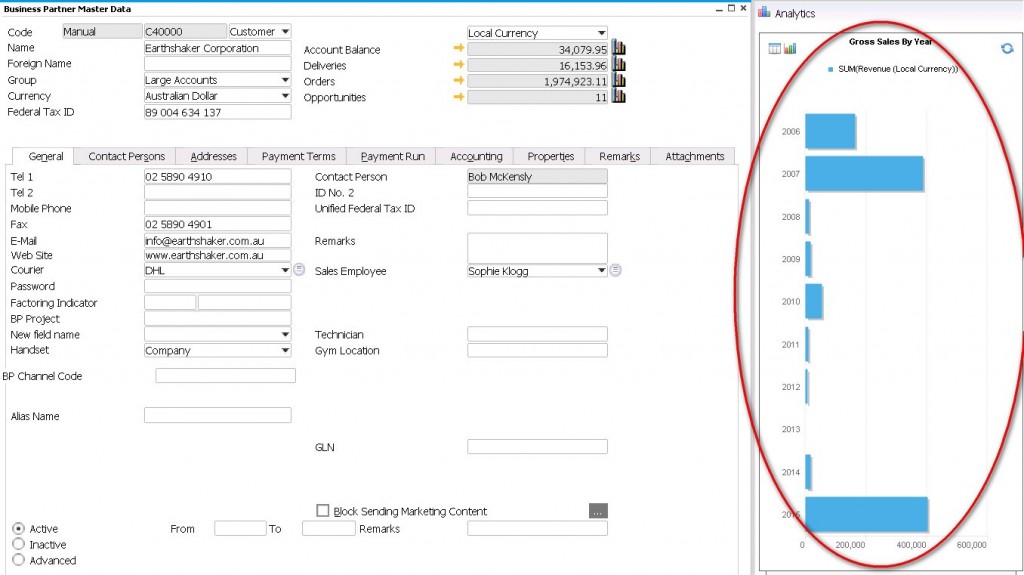 If you prefer your data in a grid format then you can easily swap between the analytical graphical view and a grid view. Swapping between these views is as easy as clicking the grid or graph button on the top left-hand side of the analytics tab.
If you prefer your data in a grid format then you can easily swap between the analytical graphical view and a grid view. Swapping between these views is as easy as clicking the grid or graph button on the top left-hand side of the analytics tab.
SAP Business One HANA Analytics – grid view of data: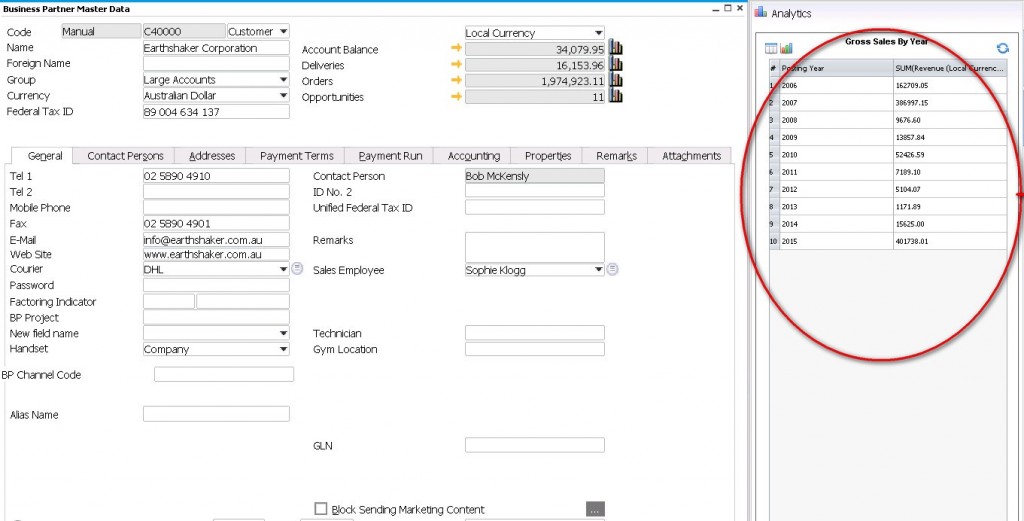 Users can add multiple analytics tabs. In this example, we are looking at the sales by year for our customer Earthshaker. By adding multiple tabs we might for example get access to:
Users can add multiple analytics tabs. In this example, we are looking at the sales by year for our customer Earthshaker. By adding multiple tabs we might for example get access to:
- Budget vs actual,
- Gross profit,
- Opportunity vs actual,
- A whole lot more (analytics) that you might want access to.
For current users of SAP Business One who use multiple user-defined fields on the business partner form who are wondering how the new SAP HANA analytics tab effects the traditional user-defined fields tab – fear not – the traditional user-defined field view is still available by simply clicking on the tab that you want – analytics or UDF (user-defined field). Let’s not forget that since the release of SAP Business One version 9 users have been able to add their user-defined fields to the main business partner form using the GUI edit function.
For the more technical team out there let’s take a quick look at how we set up these analytics in SAP Business One HANA.
Log into SAP Business One HANA and then:
- Click on the pervasive analytics,
- Go to “new dashboard” or select an existing dashboard,
- If you are creating a new dashboard then select your data source – for example, “sales revenue analysis”,
- For new dashboards – choose your target measures and target dimensions (I have chosen revenue (local currency)) as the target measure and BP code as the target dimension.
- Click on the “action” button,
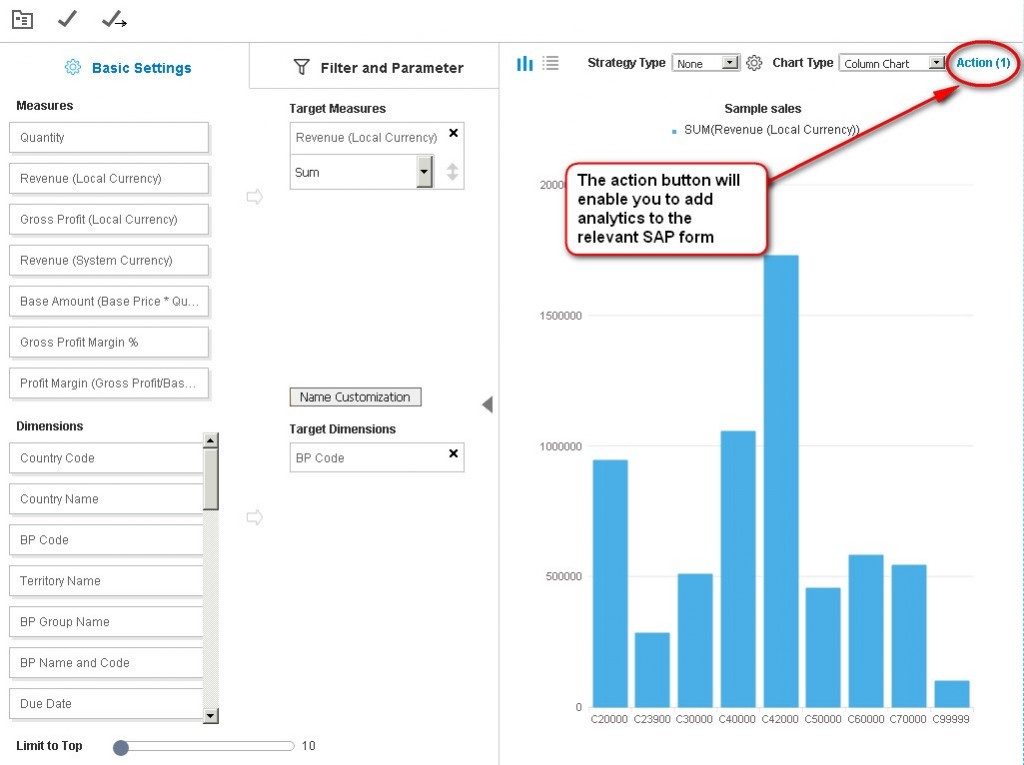
- Click on the “display dashboard in sidebars” button
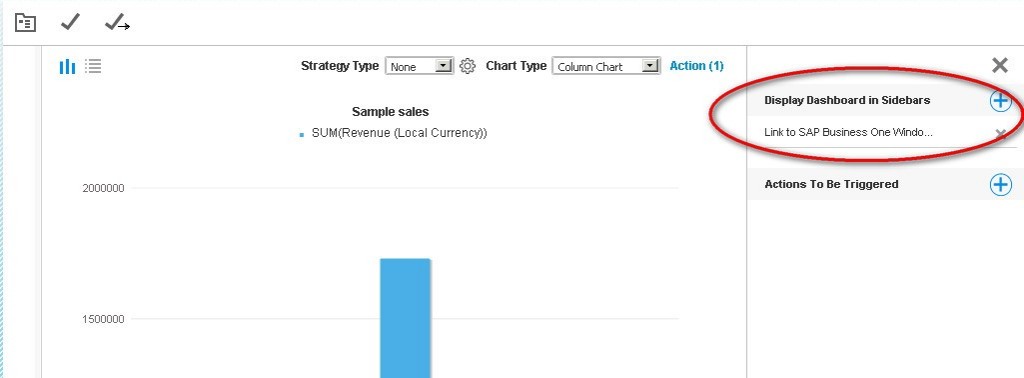
- Choose the relevant / required “target SAP Business One window” from the drop-down list. You can choose from:
- AR invoice,
- Business partner master data,
- Sales order,
- Delivery,
- AP invoice,
- Purchase order – split,
- Sales quotation,
- Item mater data,
- AR credit memo,
- Journal Entry,
- Goods receipt,
- Inventory transfer.
These target SAP Business One window options allow the user to attach dashboards to multiple different windows. For example, a user might want to attach a stock turnover analysis for the last 6 months to the item master. When the user is logged into a specific item master they get instant access to the last 6 months stock turnover for the selected item.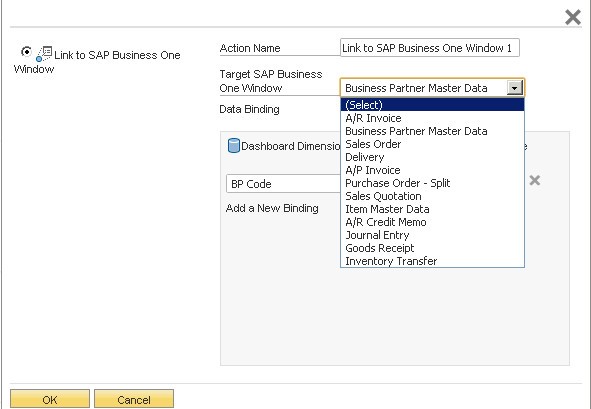 Add your dashboard dimension
Add your dashboard dimension
The adding of SAP Business One HANA analytics is best demonstrated in a video – you can check out a Leverage YouTube session on SAP Business One analytics here
SAP Business One HANA analytics on the sidebar of an SAP business one window is another great example of SAP Business One providing users instant access to information.

Brett has more than 20 years of business software sales and company management experience. Brett has been involved in more than 300 ERP projects. His passion is customer satisfaction, making sure every client is more than just satisfied. Brett wants our customers to be driven to refer their friends and peers because we offer the best services and technology available and because we exceeded their expectations.
